China3D printingTranslating biomedical research and technology into a critical part of space health means space crews will have to create their own functional cells, tissues, and even organs. Although regenerative medicine solutions capable of mimicking human organ transplants in space are not expected to be realized within the next decade, researchers are already developing applicable technologies that can work in microgravity. Today, the risk of astronauts becoming seriously ill and requiring intensive care is very small (between 1% and 2%), but it can happen. This is especially true in deep space travel, where the human body will be exposed to higher stress, higher energy ionizing radiation and cosmic rays, which can increase the dangers of prolonged spaceflight in airtight containers.
Worst-case and what-if scenarios are good starting points for important technological advances, especially when it comes to outer space. NASA’s Artemis plans to achieve human exploration of the moon by 2024, and possible human landing on the surface of Mars by 2030, relying on innovative technology to survive beyond Earth will provide humans with the opportunity to thrive in orbit.To that end, space agencies and private industry have been studying microgravity as a biological3D printingAuxiliary factors of technology to create organizational constructs and models.
So far, twobiology3D printingThe system, which has been launched on the International Space Station, uses microgravity to rapidly create 3D tissue and organ constructs, such as human heart cells or mouse thyroid glands.There are many advantages to bioprinting in space, for example, experts have found that microgravity conditions allow for more complex geometries of tissue and organ constructs with cavities, cavities and tunnels.3D bioprinting. Bioprinting can use different processes, including extrusion and magnetic bioprinting, but most importantly, bioprinting without gravity eliminates the risk of collapse, allowing the organ to grow without a scaffold. This could improve the treatment of Earth patients and help build sustainable planetary settlements.
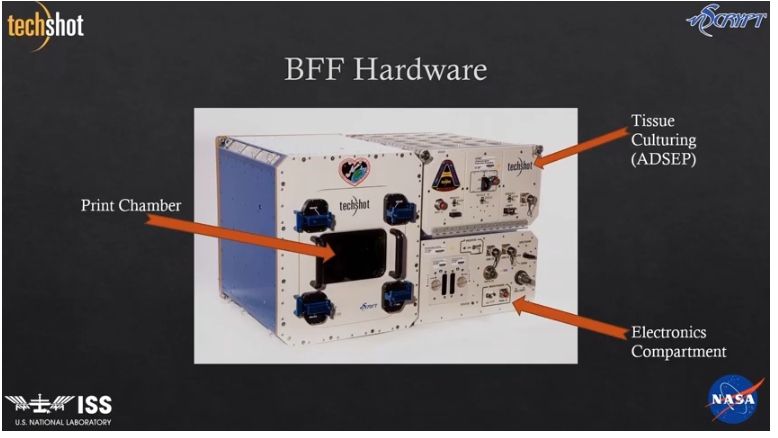
Techshot and nScrypt’s BioFabrication facility. Image courtesy of Techshot/Eugene Boland.
Manufacturing soft human tissue, such as blood vessels and muscles, has historically been difficult.Few researchers have succeeded in3D printing, as they try to deal with the complexities of bioprinting on Earth. To address this limitation, a company set out to build a bioprinter for space manufacturing.Commercial operator Techshot and industry of microgravity equipment3D bioprintingMachine manufacturer nScrypt has collaborated to develop3D bioprintingmachine, designed to create organ-like tissue in space. Launched in July 2019, the Biofabrication Facility (BFF) has successfully printed tissue-like structures with large numbers of human heart cells in the International Space Station (ISS) laboratory as well as in the human meniscus.
More importantly, although3D printingThe machine’s bioink contains cell types such as cardiomyocytes, nerve cells, and blood vessel cells, but it’s worth noting that it doesn’t contain the scaffolding material or thickening typically needed to resist the gravitational destruction of gravity when bioprinting on Earth. agent.Announced in January 2020 successfully performed with human heart cells3D bioprintingWhen printing in space, Techshot also described that “on Earth, when trying to print with soft, easily flowing biomaterials, tissue collapses under its own weight. However, when using these same materials in the microgravity environment of space, hour,3D printingThe structure will keep its shape. “
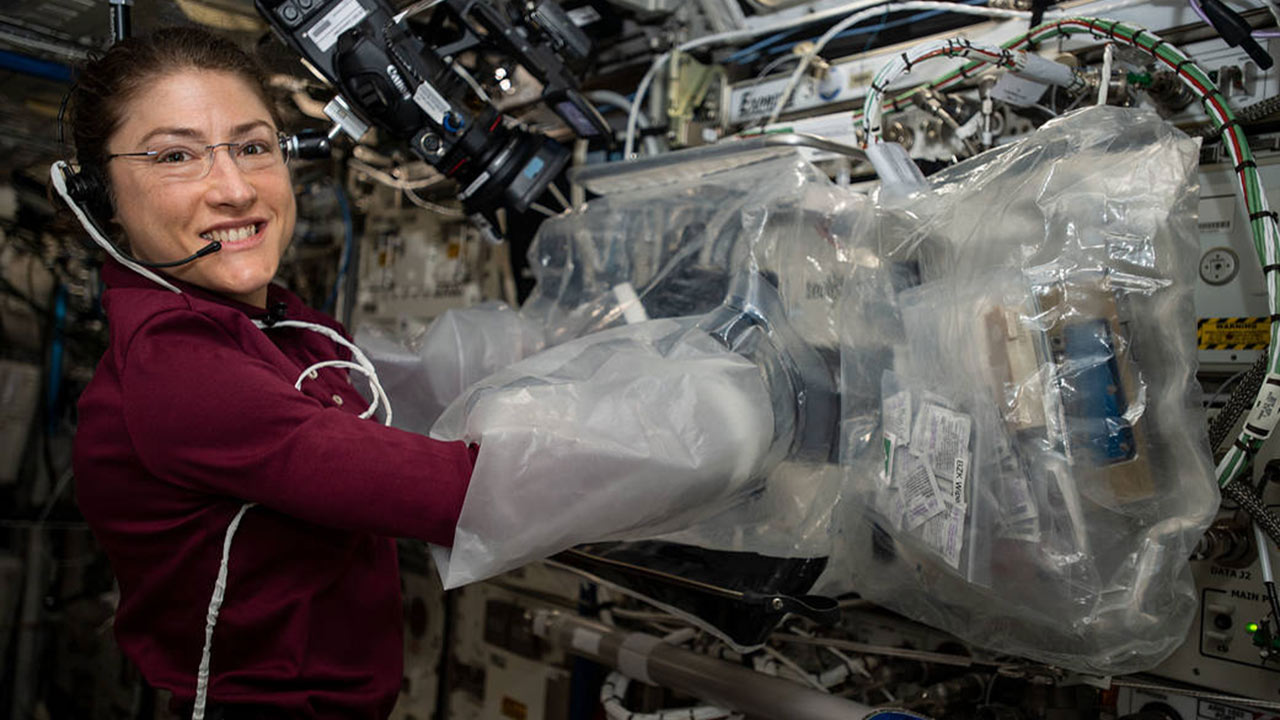
NASA astronaut Christina Koch has launched a new biofabrication facility to test its ability to print cells. Image courtesy of NASA.
The L-shaped 3-in-1 locker-sized express shelf payload BFF is only three feet wide and two feet high, but can accommodate four print heads, using dispensing needles roughly twice the diameter of a human hair to build specific cells and It will be needed for extracellular material, thereby building biological structures and developing tissues. It is built on a linear motor system capable of being driven at speeds in excess of 700 millimeters per second, mainly because speed is the essence of bioprinting in microgravity. For the next phase, the company decided to bring it back to Earth for some upgrades, but the BFF will be on Northrop Grumman’s 16th NASA Commercial Supply Service mission (NG-16 ) will be open for business after returning to the International Space Station. ).
In the 2020 ISS International Space Laboratory Organizing Laboratory Engineering and Regenerative Medicine Symposium Series, Techshot Chief Scientist Eugene Boland explained: “The reason why 3D structures are easier to produce in microgravity is the absence of convection, buoyancy and segment, we can use lower viscosity bioinks and the cells and nutrients will remain where they are placed. This is really a paradigm shift in bioprinting where we can only do it out of biological The purpose of printing biology is not for the purpose of mechanics. So we don’t have to add cross-linkers and other structures to hold them, we can actually print the shape we want. That’s what you can do in microgravity that you can’t do on the ground work, that is to use3D printing, instead of 2D and semi-2D printing. “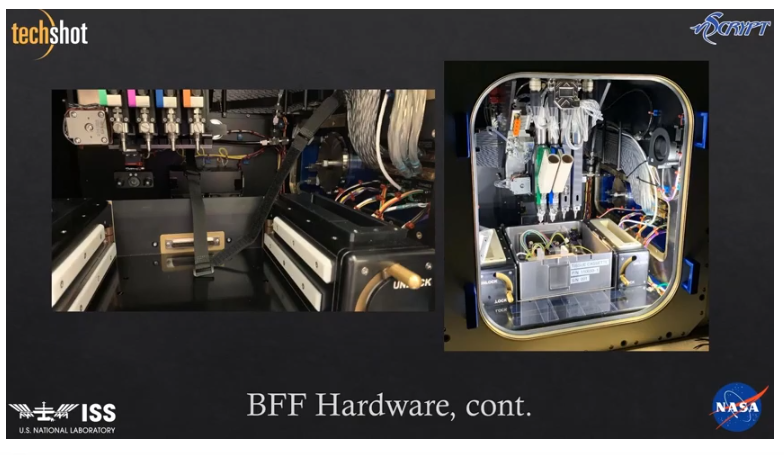
The inner workings of Techshot and nScrypt’s BioFabrication Facility. Image courtesy of Techshot/Eugene Boland.
In the fall of 2019, NASA Administrator Jim Bridenstine announced that although there is still a lot of work to be done before humans can live and work in orbit for extended periods of time, “we are using the ISS to3D printingHuman tissue, the ultimate realization of human organs using adult stem cells, is designed to transform our lives on Earth. Since being sworn in as NASA’s thirteenth administrator in 2018, Bridenstine has fast-tracked the agency’s goal of landing the first man and woman on the moon by 2024, And establish a sustainable lunar presence later in the decade.
In a public update to the agency’s Artemis program, Bridenstine said: “Right now, we’re working on making artificial retinas in orbit. These are things you can’t do on Earth because of the way materials are layered, but you can use the ISS. Manipulate in the microgravity of space. Imagine a box that fits in the palm of your hand and drop it into the space with the material inside. But when that box comes back to Earth, we open it to find a thousand artificial retinas . These retinas can help people who have macular degeneration and may lose their vision.”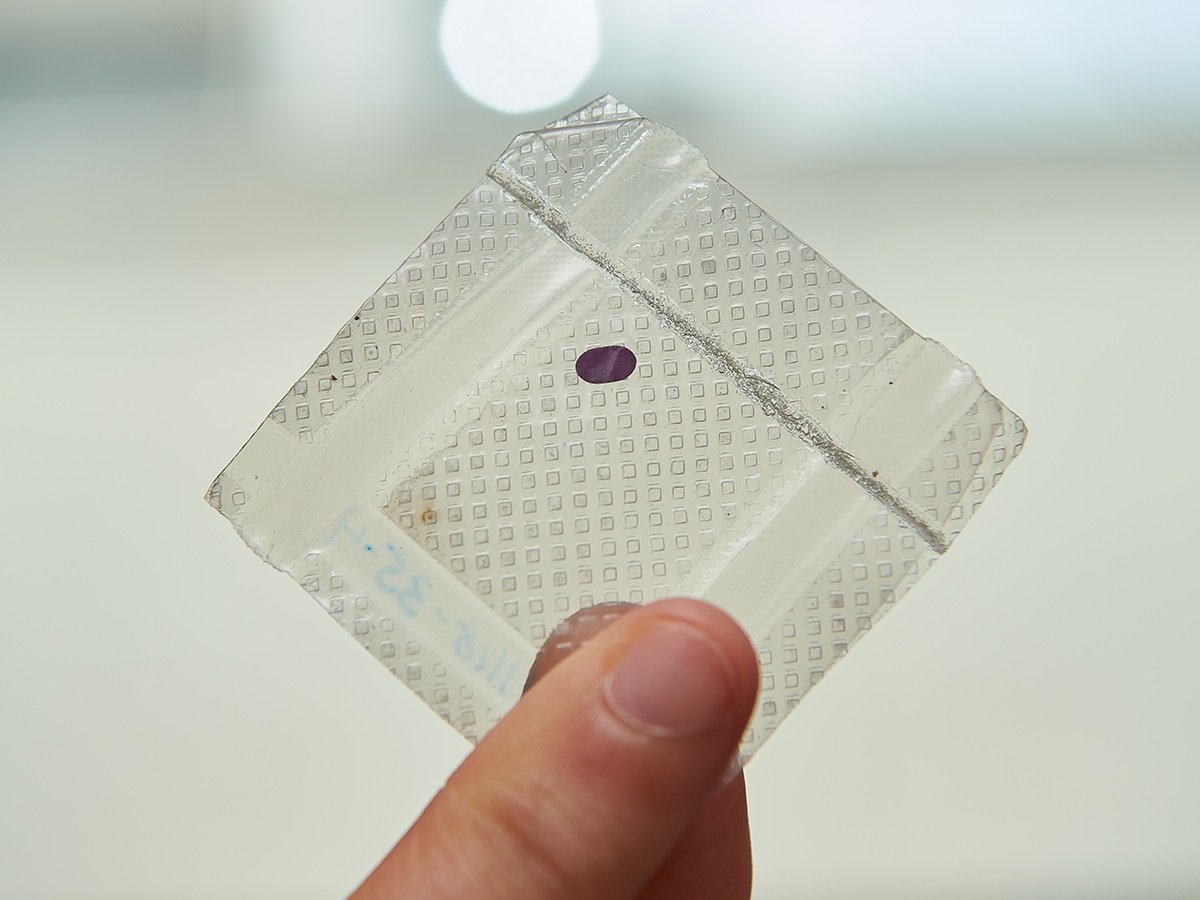
artificial retina. Image courtesy of Lambda Vision.
In fact, a protein-based artificial retina made in microgravity from innovative biotech Lambda Vision will not only restore vision to people with retinal diseases on Earth, but will be an ideal starting point for the company’s exploration of how to make it in space. Used in other biomedical and technological applications in many different industries. So far, Lambda Vision CEO Nicole Wagner reports that microgravity has successfully demonstrated delamination, depositing 100 layers on certain areas of the substrate.
ISS is also Russian Organ.Aut 3D bioprintingHome to the platform, which was successfully launched into orbit in December 2018.Roscosmos, the Russian space agency, plans to collaborate with Skolkovo-based 3D Bioprinting Solutions to create space magnets that manage tissue3D bioprintingmachine. Sphere in microgravity.is expected to develop3D bioprintingNew approaches to technology, such as acoustic or magnetic bioprinting using patterned physics for predictable cell spreading, overcome some common limitations such as slow speed and inability to create 3D constructs with complex geometries.
The system has performed experiments on mouse thyroid glands in the zero-gravity environment of the space station.3D bioprinting; even artificial meat, bone, and 3D bacterial biofilms; and growing crystals of protein compounds and bioengineered human cartilage tissue. With big plans for deep space travel, the company hopes to develop a future version of a bioprinter that could help crews replace human body parts and even be able to print food for people heading to Mars.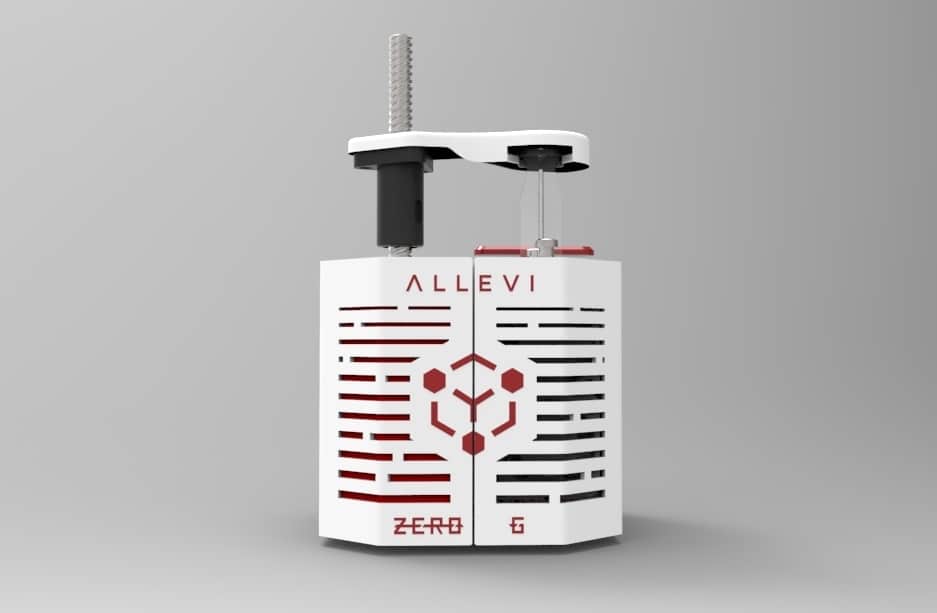
Allevi’s ZeroG bio-extruder for the AMF plant on the International Space Station (Made In Space). Image courtesy of Allevi.
Other bioprinters are also in development. Microgravity manufacturing specialist company Made In Space (MIS), in partnership with bioprinter manufacturer Allevi, set out to create the ZeroG bio-extruder, which can be easily installed into MIS’ existing ISS additive manufacturing facility. According to Allevi CEO and co-founder Ricky Solorzano, the platform will revolutionize astrobiology research by enabling the testing of biological materials and the realization of various geometries through microgravity.
“The goal is to understand the limitations and value of conducting experiments in microgravity. Just as we do with bioprinting on the ground, we believe that by providing this information and conducting experiments, the community will learn about microgravity and find those that are not just for research but are product-based applications, thereby taking the industry out of the space environment,” Solorzano also explained in the ISS National Laboratory Space Symposium series.
Sweden3D bioprintingMachine manufacturer Cellink also announced a strategic partnership with MIS to be finalized for ISS and future offline platforms3D bioprintingdevelopment opportunities.In early 2019, the European Space Agency (ESA) and the University Hospital of the Technical University of Dresden (TUD) also demonstrated that in a space-like environment on Earth3D printingcapacity of biological substances.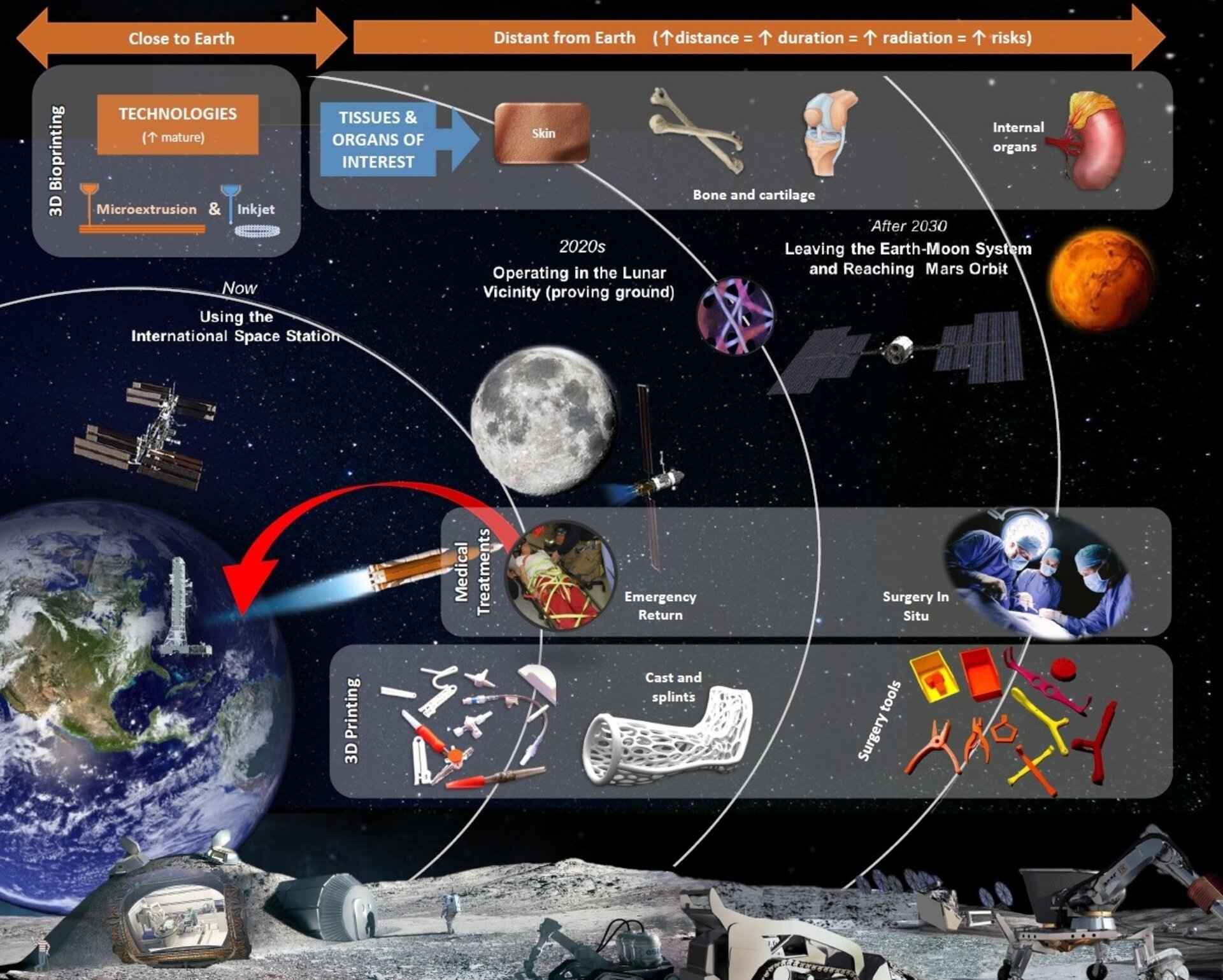
The evolution of biomedicine in space. Image courtesy of the European Space Agency.
China3D printingOnline reviews:Microgravity bioprinting opens up a whole new field and brings new challenges. As space entrepreneur Elon Musk once said, “Space is hard,” and bioprinting outside Earth is even harder. Experts have identified limitations ranging from how bioinks behave to understanding surface tension. Much work remains to be done to advance space bioprinting for Earth and crew patients, but the new collaboration could quickly move to the next phase of space bioprinting.
China3D printingNet original article!
(responsible editor: admin)


0 Comments for “3D bioprinting in microgravity: where do we stand?”